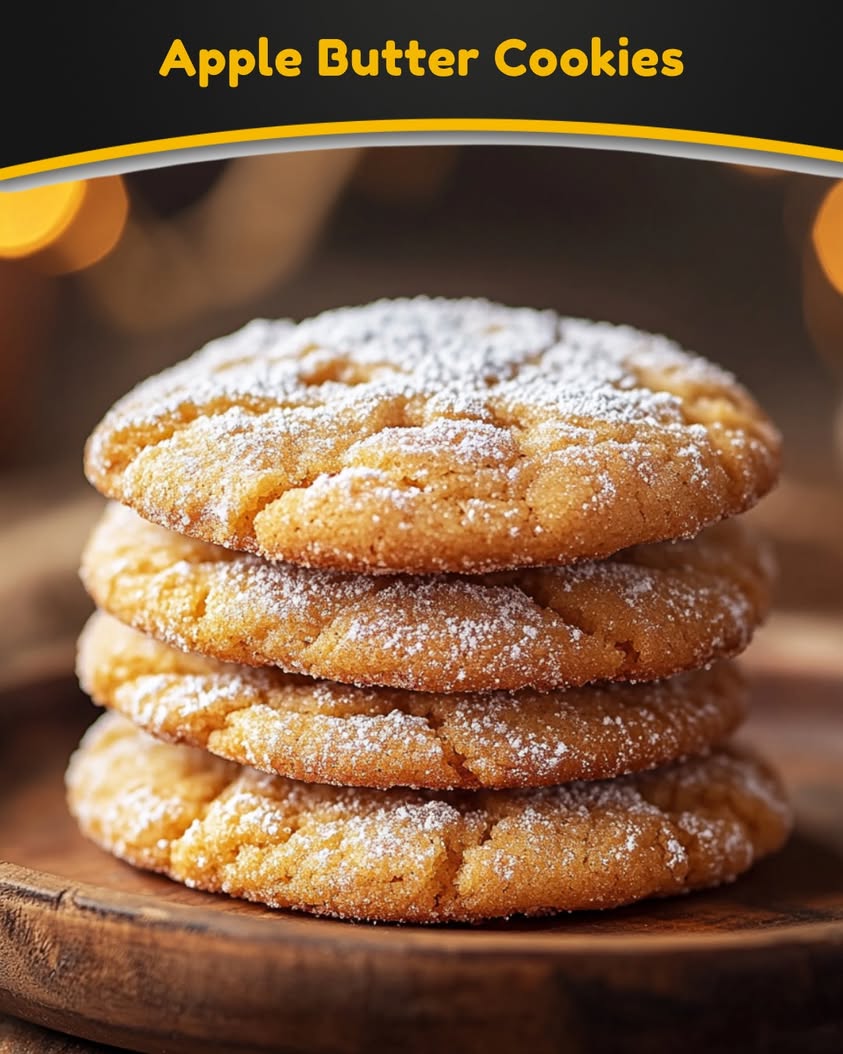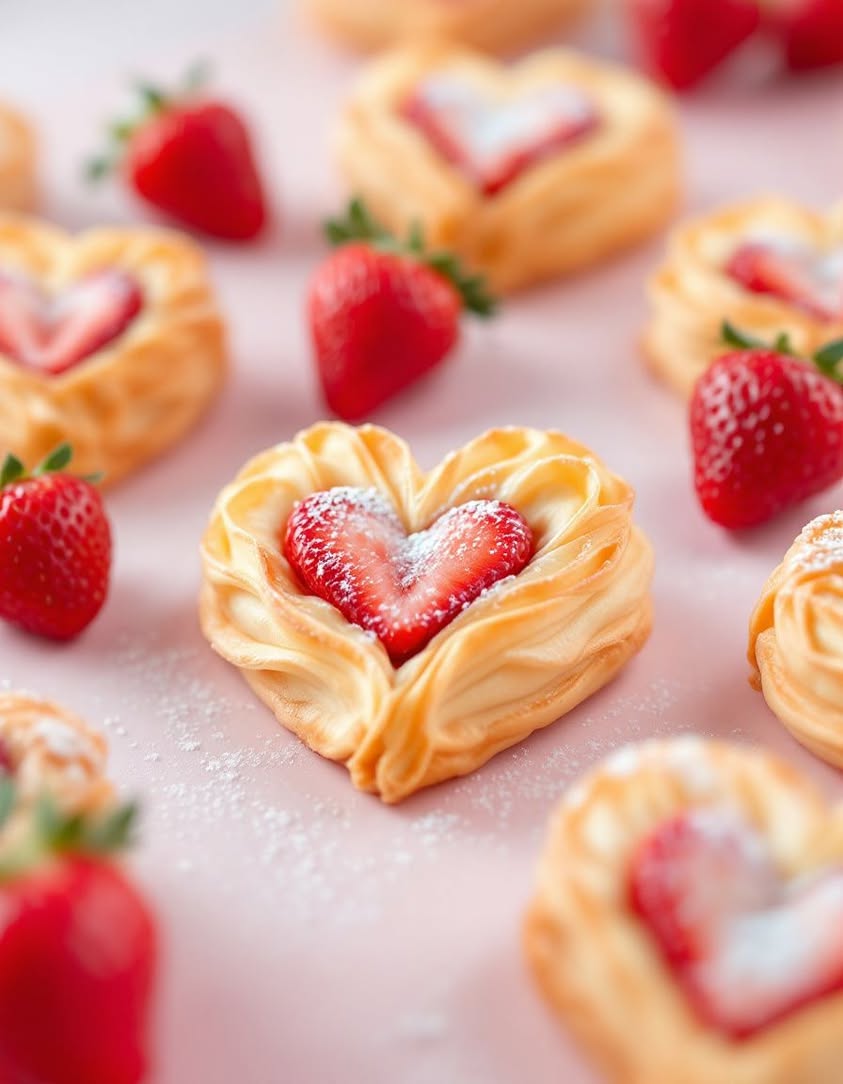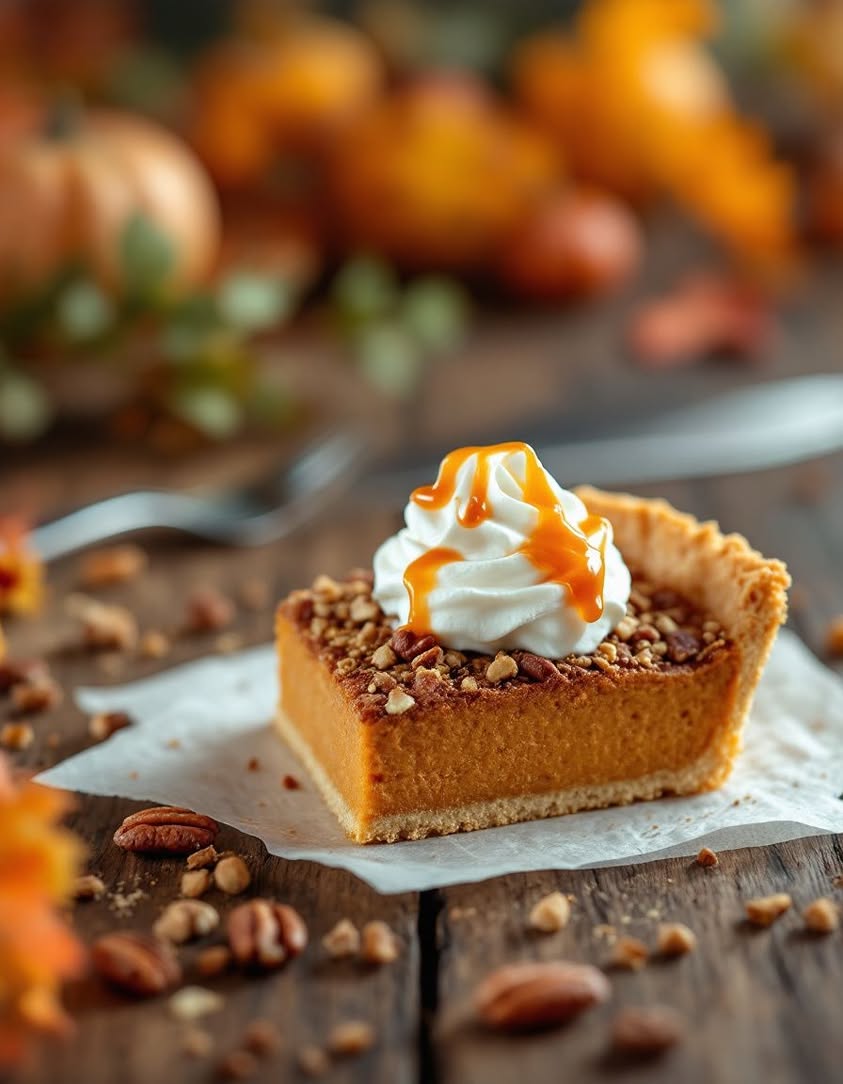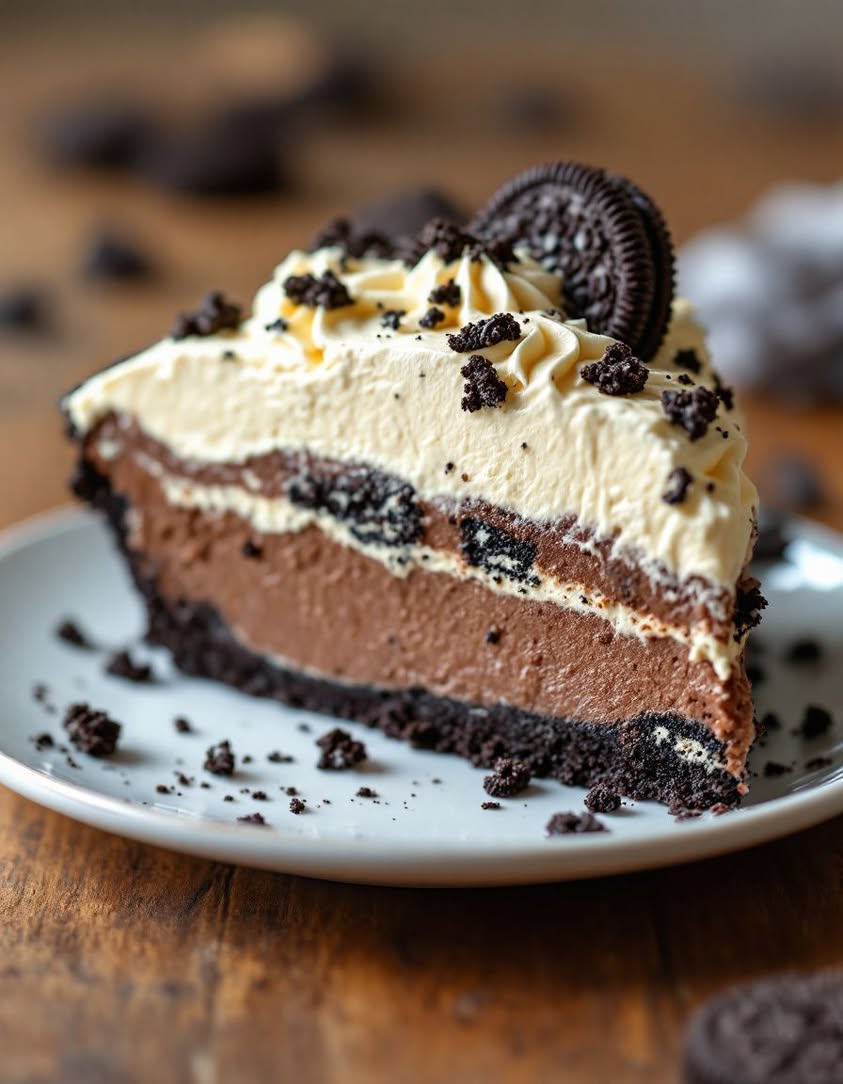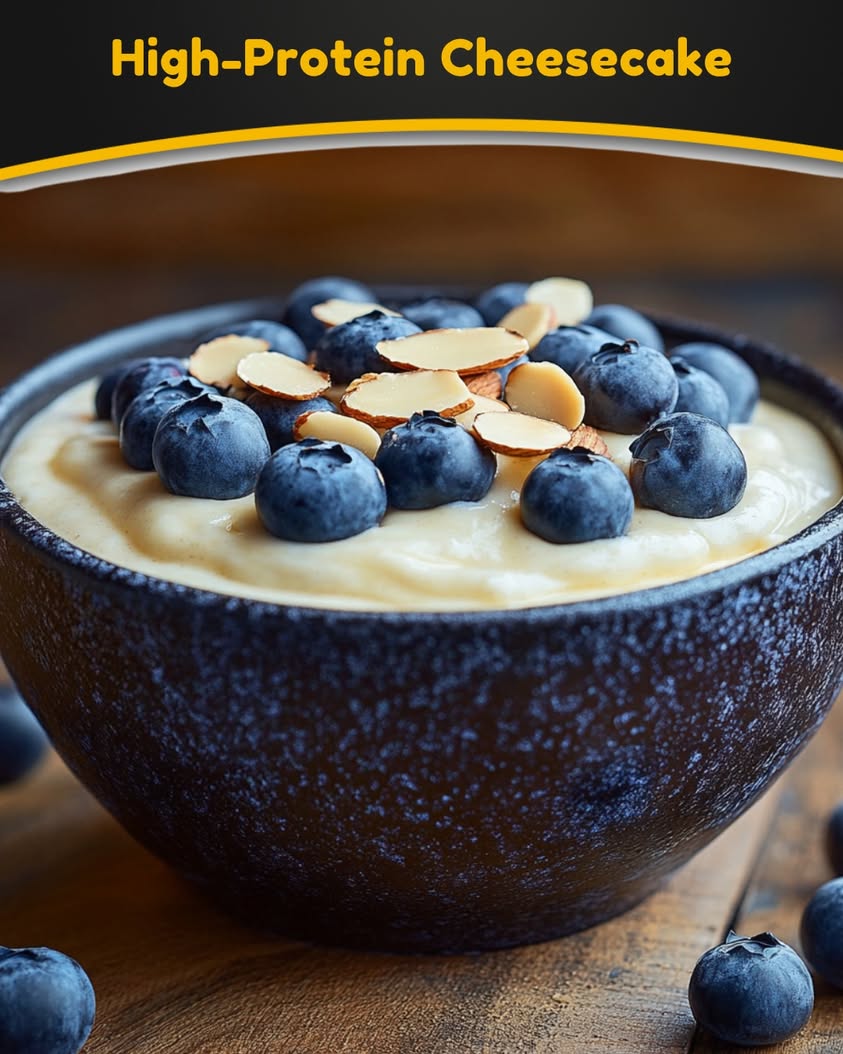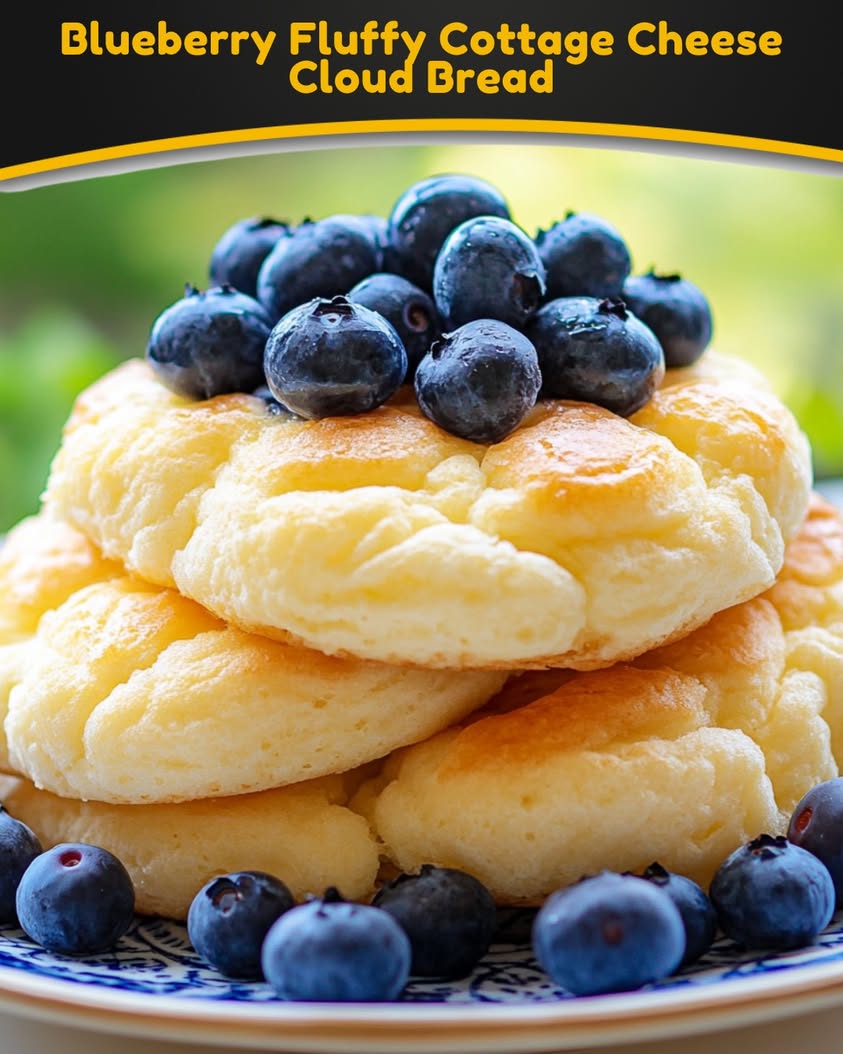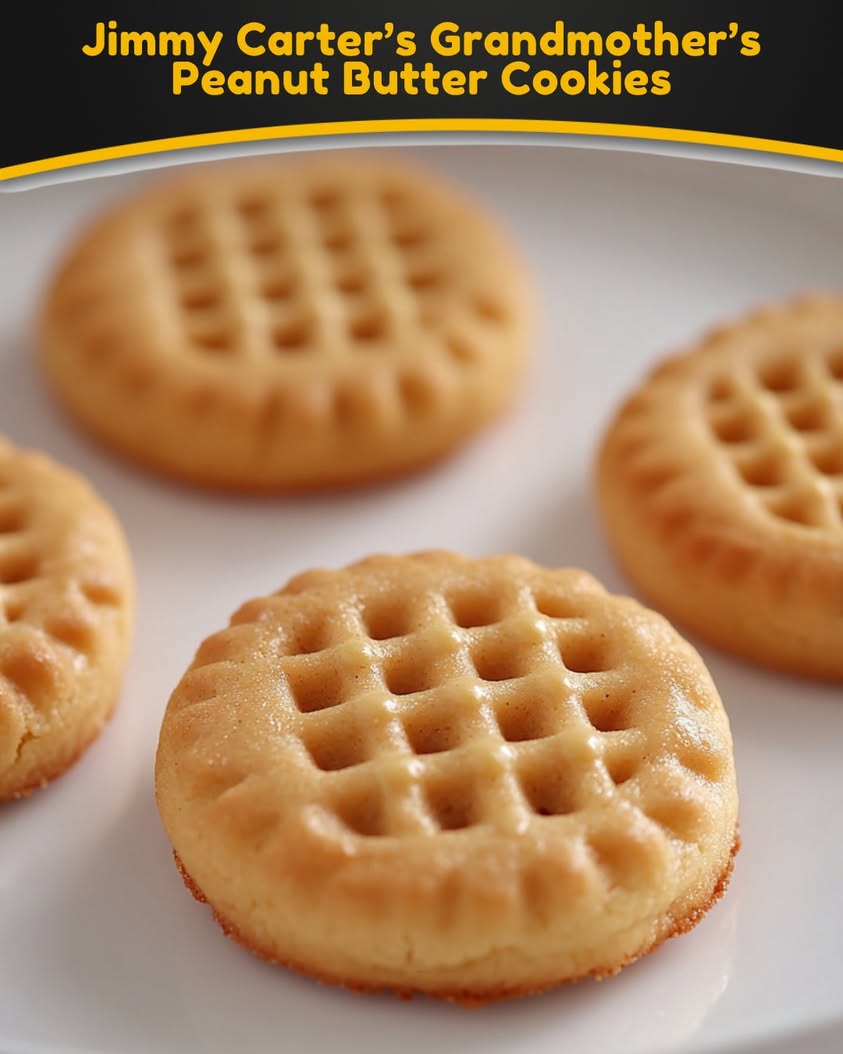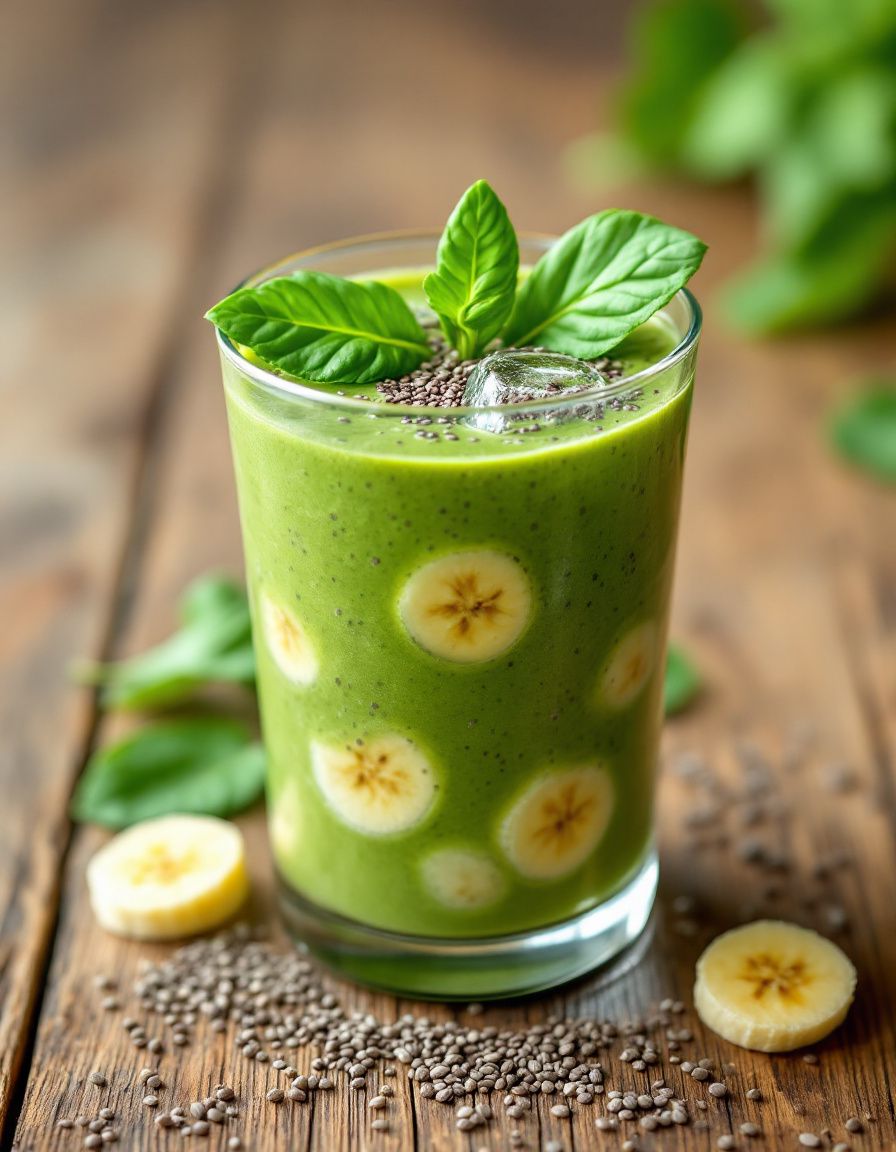Delicious Apple Butter Cookies: A Fall Favorite
Apple Butter Cookies are not just your average treats; they’re a wonderful blend of spices and sweet apple flavor that evoke the warmth of autumn. As you bite into these cookies, you’ll be welcomed by a soft, chewy texture perfectly complemented by the rich undertones of apple butter. Ideal for sharing at gatherings or keeping all for yourself, these cookies bring a touch of home-baked bliss into any kitchen.
With their delightful aroma that fills your kitchen, these cookies are perfect for those cozy fall days. Imagine the scent of cinnamon and nutmeg weaving through your home as they bake! Each cookie is a reminder of the childhood joy found in baking and sharing sweets with loved ones. They’re simple to make, require minimal ingredients, and are sure to impress anyone who tastes them.
Quick Recipe Highlights
- Flavor Profile: These cookies feature a delightful combination of sweet and spicy flavors, highlighting the essence of fall with apple butter, cinnamon, and just a hint of nutmeg.
- Texture: The chewy texture combined with a lightly crisp edge creates a perfect bite that melts in your mouth.
- Aroma: Baking these cookies fills your home with the inviting scents of cinnamon and warm apples, creating an irresistible appeal.
- Visual Appeal: Golden brown cookies with soft peaks and a sprinkle of cinnamon sugar on top make for an attractive dessert.
- Skill Level Needed: This recipe is easy enough for beginners yet rewarding for experienced bakers, thanks to its straightforward steps.
- Special Equipment: You will need a mixing bowl, baking sheet, and parchment paper for easy cleanup.
Recipe Overview
- Difficulty Level: This recipe is classified as easy, making it perfect for novice bakers looking to try something new.
- Category: These cookies can be served as a snack, dessert, or even at tea time, making them versatile for any occasion.
- Cuisine: Inspired by classic American baking traditions, Apple Butter Cookies echo the comfort associated with homemade treats.
- Cost: Budget-friendly ingredients make these cookies a cost-effective choice for gatherings or gifting.
- Season: Ideal for fall, but they can be enjoyed year-round with the right spicing.
- Occasion: Perfect for holiday celebrations, family gatherings, or simply sharing with friends over coffee.
Why You’ll Love This Recipe
These Apple Butter Cookies are a magic blend of flavor and nostalgia that delight everyone who tries them. Each bite bursts with flavor, combining the sweetness of apple butter with warming spices. The taste is reminiscent of fall baking traditions, leaving a lasting impression. Their soft texture creates a comforting mouthfeel that makes you reach for one more, transforming any snacking moment into a cozy experience.
Additionally, the convenience of this recipe allows for a quick preparation, enabling you to whip up a batch in just 25 minutes. With minimal equipment required, even the most inexperienced bakers can get involved without stress, making it a fun family activity. The joy of baking and the delicious outcome will surely inspire you to make them again and again.
Nutritionally, these cookies offer a balance between indulgence and wholesome ingredients. With apple butter packed with vitamins and the use of whole grains, they can be a smarter sweet treat option. The spices not only enhance flavor but also come with health benefits, making you feel good about enjoying this dessert.
Sharing these cookies becomes a social experience as you watch friends and family enjoy the flavors and aromas that fill the air. They are perfect for gatherings, potlucks, or simply to brighten someone’s day. Their delightful taste can easily spark conversations and create memories among those you love.
Cost-effective and easy to make, these cookies provide a great way to treat both yourself and others. The simple ingredients mean you likely have everything on hand. They make for delightful homemade gifts that show you care without breaking the bank.
Historical Background and Cultural Significance
Originating from the time when apples were a staple in American households, the apple butter cookie embodies home-cooked traditions. Apple butter itself dates back to early American settlers in the 18th century, who would preserve apples in its sweet, rich form. Over the years, recipes have evolved to incorporate this delightful spread into baking.
The cultural importance of apple butter cookies highlights the communal aspect of baking, where families would gather to bake and celebrate harvest time. These traditional cookies often show up at potlucks and family reunions, representing the warmth and love of homemade treats shared among loved ones.
Over time, variations of the original recipe have emerged, showcasing regional twists and different spice combinations. Today, many families may have their own version, passed down through generations, symbolizing their unique culinary heritage.
As different regions put their spin on apple butter cookies, local ingredients or flavorings get incorporated, resulting in a colorful array of cookie types while keeping the spirit of the original alive. From adding nuts to creating gluten-free alternatives, the versatility of this cookie continues to evolve while retaining its comforting roots.
Ingredient Deep Dive
Apple Butter: This sweet spread has deep roots in American culinary tradition and is made by slow-cooking apples to concentrate their natural sugars and flavors. Nutritionally, apple butter provides dietary fiber, antioxidants, and vitamins such as A and C. When selecting apple butter, look for options with no added sugars for a healthier choice. Store your apple butter in a cool dark place, and consume it within a year for the best flavor.
Flour: The main structure in cookies, flour contributes to their texture. All-purpose flour is the most commonly used, but whole wheat flour can add nutrition and flavor. It is important to use fresh flour stored in a cool, dry place, as stale flour can affect texture. Substituting with gluten-free varieties such as almond or oat flour can create variations suited for different dietary needs.
Common Mistakes to Avoid
- Overmixing the dough: Mixing too much can lead to tough cookies. Mix just until ingredients are combined.
- Using cold ingredients: Ingredients should be at room temperature for better incorporation. Cold butter and eggs can lead to uneven texture.
- Not chilling the dough: Skipping this step may result in flat cookies. Chilling helps maintain their shape and enhance flavors.
- Baking at incorrect temperatures: Always preheat your oven. Baking at the wrong temperature can lead to burnt edges or doughy centers.
- Skipping parchment paper: Using parchment prevents sticking and promotes even baking. It’s an easy way to ensure perfect cookies.
- Not measuring ingredients accurately: Baking is a science. Use proper measuring tools to ensure the right ratios for success.
- Not giving enough space on the baking sheet: Cookies spread during baking, so leave enough space to prevent them from merging.
- Underbaking or overbaking: Keep a close eye on your cookies. They should be lightly golden on the edges and set in the center when done.
Essential Techniques
Mixing the Dough: An essential step that greatly influences the cookie’s final texture. Use a gentle hand, mixing just to combine wet and dry ingredients. Overmixing incorporates too much air, leading to denser cookies. Aim for a cohesive dough with visible flour still present before proceeding.
Chilling the Dough: This technique is crucial for cookies like these. Chilling allows flavors to meld and helps prevent excessive spreading during baking. Allow at least 30 minutes in the fridge for optimal results. Visual cues include a firm dough that holds its shape when formed into balls.
Pro Tips for Perfect Apple Butter Cookies
1. Use homemade apple butter for the best flavor. It’s easy to make and elevates your cookies considerably.
2. Add a pinch of sea salt to enhance the sweetness and balance flavors.
3. Experiment with spices by adding ginger or cloves for an extra kick.
4. If you prefer crispier cookies, bake them a minute or two longer.
5. Consider adding nuts for a crunch and deeper flavor.
6. For festive presentations, roll the cookies in cinnamon sugar before baking.
7. Let the cookies cool on the baking sheet for a few minutes before transferring to a rack for better texture.
8. Store cookies in an airtight container to keep them fresh longer.
Variations and Adaptations
The joy of Apple Butter Cookies lies in their adaptability. Consider regional variations by adding local nuts or fruits that align with your area’s seasonal offerings. For example, chopped pecans or walnuts can add a delightful crunch, lending a nutty flavor that complements the sweet spices.
Seasonal adaptations can include pumpkin spice or maple flavoring, which resonate well during the fall or winter months. For dietary modifications, substituting with almond flour or other gluten-free options can cater to those with dietary restrictions while maintaining the delightful taste of apple butter.
Serving and Presentation Guide
For an appealing presentation, try stacking a few cookies on a plate with a sprig of mint for a pop of color. Dusting them lightly with powdered sugar enhances their visual appeal while adding a sweet finish. Serve alongside a cup of hot tea or coffee to complement the flavors beautifully, making your serving even more enjoyable.
Temperature considerations are key; serve these cookies slightly warm for a delightful, gooey center, or at room temperature for a firmer bite. For portion control, cut larger cookies into halves or thirds, allowing everyone to enjoy without overindulging.
Wine and Beverage Pairing
Pair these cookies with a light dessert wine, such as a Riesling or Muscat, which complements the sweetness and fruitiness of the apple butter. If you prefer non-alcoholic options, consider serving with a spiced hot apple cider or a creamy vanilla chai latte, enhancing the flavor profile of your cookies beautifully.
Temperature is important; ensure your wines are chilled or served at room temperature, depending on the varietal. For seasonal gatherings, spiced cider served warm creates a cozy atmosphere, perfect for enjoying with apple butter cookies.
Storage and Shelf Life
Store your Apple Butter Cookies in an airtight container at room temperature for up to a week. For longer preservation, you can freeze them by placing them in a single layer on a baking sheet until frozen, then transferring to a freezer-safe container. They can last up to three months in the freezer, maintaining their delightful flavor and texture well.
If you notice any cookies hardening, you can revive their texture by placing a slice of bread in the container with them, which will help retain moisture. When reheating, place cookies in a microwave for a few seconds to regain warmth.
Make Ahead Strategies
To make the preparation even smoother, consider making your dough a day in advance. You can refrigerate it overnight, which allows flavors to intensify. Simply shape the cookies before baking, and you’ll have fresh cookies ready in no time.
Storing components separately can also maintain freshness. Ensure to keep your apple butter and a cookie dough in separate containers until you’re ready to combine them. For the best quality, bake your cookies fresh right before you intend to serve them, preserving their delightful texture and flavor.
Scaling Instructions
If you’re looking to halve this recipe, easily do so by cutting all ingredient quantities in half while following the same mixing and baking instructions. For doubling or tripling, you may require additional baking sheets and increased prep time, depending on your oven space.
Timing modifications may be necessary when scaling up, especially if you’re baking multiple trays at once. Be sure to rotate trays halfway through baking for even results. Store any extras in an airtight container or freeze in batches to keep them fresh.
Nutritional Deep Dive
The macro breakdown of these cookies reveals a nice balance of carbohydrates, fats, and proteins, primarily from the flour and apple butter. While these cookies are a treat, moderation is key for maintaining a balanced diet.
Micronutrient analysis shows that the spices used also contribute beneficial antioxidants while the apple provides dietary fiber. For those looking into portion analysis, consider enjoying one or two cookies at a time and incorporating them into a balanced diet for weight management.
Dietary Adaptations
For gluten-free options, swap all-purpose flour for a 1:1 gluten-free flour blend, ensuring you enjoy the same delightful texture without the gluten. Dairy-free alternatives can be achieved by using coconut oil in place of butter for a rich, plant-based twist.
Vegans can substitute egg by using applesauce or a flaxseed mixture, allowing for a fully plant-based version without sacrificing flavor or texture. Low-carb adaptations could involve using almond flour and a sugar substitute, making these cookies accessible to a wider audience.
Troubleshooting Guide
If your cookies turn out too dry, it may be a result of overbaking or too much flour. Check your measurements and adjust baking times accordingly. If they spread too much, chilling the dough for a bit longer may help maintain their shape during baking.
For any overly sweet cookies, consider reducing the sugar in the future or adding a touch of salt to balance the flavors. If your cookies aren’t golden enough, ensure your oven temperature is accurate and consider adding a couple of minutes to the bake time.
Recipe Success Stories
Community feedback reflects enthusiastic praises for this recipe as a go-to fall treat. Many have taken to sharing their personal twists, like adding different spices or using various nut butters instead of apple butter. Readers share their excitement at how they’d gift these cookies, especially during the holidays, showcasing their interactive nature.
Some have even experienced success by baking these cookies with kids, creating lasting memories while introducing the joy of baking to a younger generation. The result is not just tasty cookies but a delightful experience that fosters family bonding.
Frequently Asked Questions
Can I use store-bought apple butter?
Absolutely! Store-bought apple butter will work just fine. Look for options without high fructose corn syrup for an authentic taste.
Can I freeze the dough?
Yes, you can freeze the dough. Shape it into balls, freeze them, and bake them right from frozen, adding a couple of minutes to the bake time.
What if I don’t have apple butter?
If you don’t have apple butter, you can make a quick substitute by blending unsweetened applesauce with spices like cinnamon and nutmeg.
How do I know when the cookies are done?
Look for a slight golden color on the edges, and when lightly pressed, the center should still be soft but not raw. They continue to cook slightly outside the oven.
Can I substitute the flour?
Yes! While all-purpose flour is ideal, you can use gluten-free flour blends or whole wheat flour for a heartier texture.
How long do these cookies stay fresh?
Stored in an airtight container, these cookies will maintain their optimal freshness for up to a week at room temperature.
What can I pair with these cookies?
These cookies are delicious on their own but pair beautifully with coffee, hot apple cider, or a sweet dessert wine.
Can I add mixes to the dough?
Absolutely! Chocolate chips, nuts, or dried fruits can be added to enhance flavor and create a fun variation on the classic recipe.
Is this recipe kid-friendly?
Yes! It’s simple enough for kids to help with. Supervise them, especially during baking, for a fun family activity.
What should I do if dough is too sticky?
If your dough is too sticky, try chilling it for a little longer or adding a small amount of flour to adjust the consistency.
Additional Resources
For more delightful recipes like Apple Butter Cookies, consider browsing our collection of autumn-inspired treats. Find technique guides that cover everything from mixing to baking essentials to enhance your skills further. Ingredient information can help you select the best produce for rich flavors, while equipment recommendations ensure you have the right tools for baking success.
Join the Conversation
We love seeing your takes on recipes, so don’t forget to share your experiences on social media! Post photos of your Apple Butter Cookies and share personal adaptations. Engage with our community by leaving comments and suggestions on how you made this recipe your own, and inspire others to join in the fun of baking.
The Recipe
Apple Butter Cookies
Serves: 24 cookies
Prep Time: 15 mins
Cook Time: 10 mins
Total Time: 25 mins
Kitchen Equipment Needed
- Mixing bowl
- Baking sheet
- Parchment paper
- Measuring cups and spoons
- Electric mixer (optional)
Ingredients
- 1 cup apple butter
- 1/2 cup sugar
- 1/4 cup brown sugar
- 1/2 cup butter, softened
- 1 large egg
- 2 cups all-purpose flour
- 1 tsp baking soda
- 1 tsp cinnamon
- 1/4 tsp nutmeg
- 1/4 tsp salt
- Cinnamon sugar, for sprinkling
Directions
- Preheat your oven to 350°F (175°C) and line a baking sheet with parchment paper.
- In a mixing bowl, cream together apple butter, sugar, brown sugar, and softened butter until smooth.
- Add the egg and mix until fully incorporated.
- In a separate bowl, combine flour, baking soda, cinnamon, nutmeg, and salt.
- Gradually add the dry ingredients to the wet mixture and stir until just combined.
- Using a spoon or cookie scoop, drop dough onto the prepared baking sheet, leaving space between each cookie.
- Optional: Sprinkle cinnamon sugar over the top before baking.
- Bake for 10-12 minutes or until the edges are lightly golden and the center is set.
- Allow cookies to cool on the baking sheet for a few minutes before transferring to a wire rack to cool completely.
Recipe Notes
- Store in an airtight container for up to a week.
- Freeze for longer storage, up to three months.
- Feel free to add mix-ins like chocolate chips or nuts as desired.
